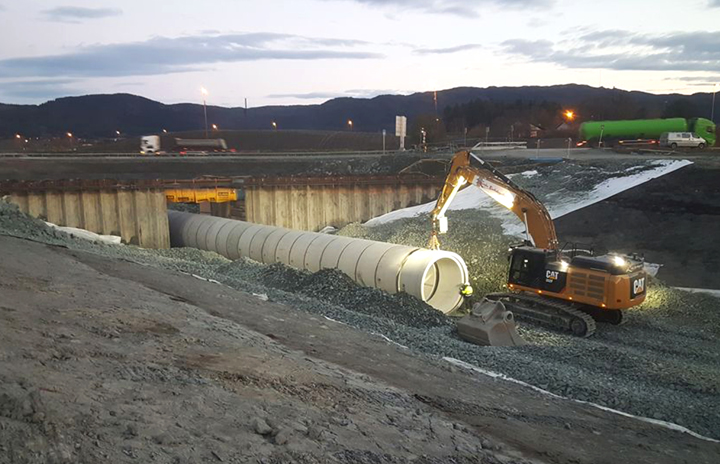Transporting water from the desert to the cities

Challenge
Libya is one of the driest countries in the world. There are places where decades may pass without any rain, and even in the highlands rainfall seldom happens. Less than 5% of the country receives enough water for settled agriculture.
Much of Libya's water supply used to come from desalination plants at the coast, which were used only for domestic purposes. Little was left to irrigate the land.
The aim of the project was to provide fresh water for everyone, and to turn the desert green, making Libya self-sufficient in food production.
To make that happen, the Libyan Government commissioned a massive engineering project, nicknamed the 'Great Man Made River' (GMMR), consisting of a network of underground pipes that would bring fresh water from ancient underground aquifers deep in the Sahara to the drought-suffering Libyan cities. That meant covering 4,000 km with concrete pipes 4 meters in diameter.
The most ambitious Concrete Pipeline in the world.
Our activities
Trelleborg in partnership with SNC Lavalin Engineers and pipe manufacturer Al Nahr in Tripoli developed a watertight solution for two pipelines so far:
The Sarir-Sirt/Tazerbo-Benghazi System is designed to supply 2 million cubic meters of water from well-fields at Sarir and Tazerbo in the south of Libya to the cities on the coast. The overall length of the conveyance pipelines is approximately 1,600 km comprised of pre-stressed concrete cylinder pipe.
The Hasouna-Jeffara System is designed to supply 2.5 million cubic meters of water per day from well-fields at Jabal Hasouna to the Jeffara Plain and to Tripoli at the coast. This water flows through pre-stressed concrete cylinder pipe of 4 meters in diameter as well. The overall length of the conveyance pipelines is approximately 1,275 km.
Trelleborg supplied specially engineered O-ring profile to form a permanent flexible sealing system between the pipes. Due to the size of the concrete pipes, the sealing rubber needed to withstand enormous forces. That is why our seals are made of high tensile strength rubber. In total, we delivered 1,250 tons of sealing material.
Product details
The Trelleborg 117 O-ring is a tailor-made ring, developed and produced on request. Trelleborg 117 O-ring profile used for the GMMR application requires a special rubber compound as high tensile strength is required.
The joint design is based on an accurately formed groove on the spigot end of the pipe into which the O-ring is stretched.
High accuracy and consistency of the seal cross section is essential as the seal’s volume is measured in a displacement tank to ensure the exact amount of rubber is used. The bulk modulus of the seal in the captive groove is used to generate a high interface pressure resulting is a high-performance joint.
The joint uses an O-ring – it’s a pressure joint which requires very high accuracy of the O-ring extrusion. The O-ring is measured by 'volume' and then quality controlled using linear dimensions.


